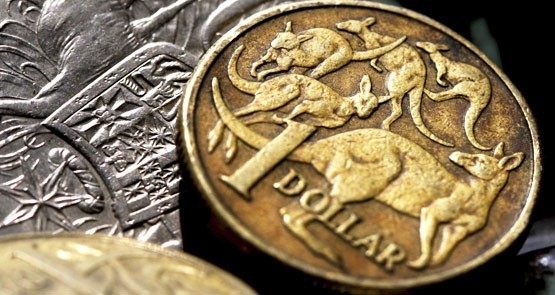
It only happens once every three years, but for some strange reason Australia’s political duopoly always seems to get away with not discussing the extraordinary amounts of public funding they extract from taxpayers.
A $333 million payout over the past seven elections — with Labor and the Coalition scoring about $275 million — is surely something that should be debated, especially considering Australia’s woeful disclosure requirements for campaign spending and political donations.
The AEC yesterday released a full breakdown of the initial $60.4 million it yesterday paid to 23 registered political parties and 24 independents based on the rate of $2.63 per vote for all candidates who polled more than 4%. Unlike the doctors with their rebates, political funding has been steadily indexed up from $1.62 per vote in 1998.
Just as occurs with the annual February dump of political donations data, most of our senior political journalists, such as Laurie Oakes and Mark Riley, completely ignore the electoral funding figures and the whole issue of Australia’s campaign finance system.
Those who choose to cover it generally give the duopoly an easy ride and instead focus their coverage on independents and minor parties.
Poor old Rob Oakeshott seems to get the most attention, which is a strange reward for having a go, demonstrating model transparency on spending and revenue and being popular with voters.
Having scoured the media coverage of this issue over the past 24 hours, it appears that the duopoly has not even asked to provide any commentary on the record $49 million they received yesterday.
At least Labor supports the idea of banning parties or candidates from making a profit — as occurs in states like Victoria, where you have to provide audited statements on spending before collecting a payout.
Just like with political donations, when the Lib-Lab duopoly is asked to comment on this issue, they duck for cover. The ABC heavies haven’t even bothered to ask, with no coverage so far on The World Today, AM, PM, 7.30 or Lateline.
It’s not as if the AEC isn’t helpful as they provide all the public funding data way back to 1998. Here are few highlights from the previous six elections:
2013: The Abbott landslide garnered the Coalition $26.4 million, a record $6.2 million advantage over Labor’s $20.2 million. The Greens slid back to $5.35 million based on $2.49 per vote, and Palmer pulled $2.2 million, Xenophon $650,000 and the Liberal Democrats $1.04 million.
2010: A total $53 million paid out based on $2.31 per vote, with the Greens collecting a record $7 million or one-third of Labor’s $21 million haul. The Coalition collected $23.5 million, and Tony Windsor set a record for an independent with $129,099.
2007: The Rudd landslide was the last time Labor’s $21 million windfall exceeded the $20.5 million paid to the Coalition. Total payout was $49 million based on $2.10 per vote.
2004: About $42 million paid out based on the rate of $1.94 per vote with Latham Landslide seeing Coalition enjoy a $3.5 million advantage over Labor. Hanson ran as an independent and collected $200,000.
2001: About $37.5 million paid out at the rate of $1.79 per vote, and this was the last time we got a state-by-state breakdown of the major party payments.
1998: Some $33.82 million paid out at the rate of $1.62 per vote. One Nation collected $3.04 million, having topped 4% in every state and territory.
The Australian ran a big picture of Pauline Hanson on page 1 yesterday, highlighting her party’s $1.6 handout, but if anything this is unfairly low because Hanson received no funding at all from Victoria, South Australia and Tasmania, where her vote failed to top 4%.
Bizarrely, her Tasmanian Senate ticket managed just 8700 primary votes, which didn’t qualify for public funding but came within 141 votes of winning the 12th spot.
However, Hanson’s party was still lucky to score $1.6 million because she only just qualified with 4.09% in NSW and 4.02% in Western Australia.
It would be interesting to know where the $1.6 million goes, but the media can hardly go after Hanson unless they demand some spending transparency from all parties.
So far, it is only the minor players such as Jacqui Lambie, Rob Oakshott, Nick Xenophon and Derryn Hinch that are revealing some of these figures and opening talking about it in the press.
Don’t Labor Party members and Liberal Party donors deserve some transparency about their spending? This is something which will only happen if we get some sustained pressure from the media establishment, which for some strange reason refuses to heavily scrutinise the major parties, which continue to write the political funding rules to suit themselves.
For those who want to follow up, the new Special Minister of State is Scott Ryan and Labor’s shadow Special Minister of State is Stephen Conroy.
A debate between the two of them about the system and figures would be good for our democracy, if anyone can be bothered.








So, what’s the alternative to public funding? Parties and candidates being the even more brazen handmaidens of whatever vested interests can scrape together the hard-earned to get their trojan horses over the line? The system isn’t perfect, but nothing about our system is. It’s just less imperfect than others.
I am strongly in favour of this sort of public funding – it’s better than forcing them to depend on taking bribes. The problem we have is that now we let them collect the payout AND take bribes. The system should be 100% public funding with caps on spending and real-time disclosure, with only individuals allowed to donate.